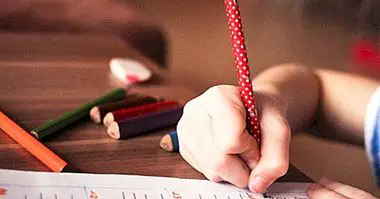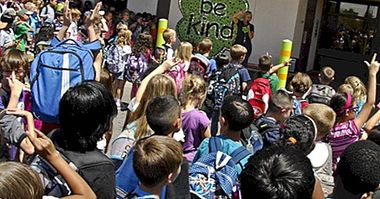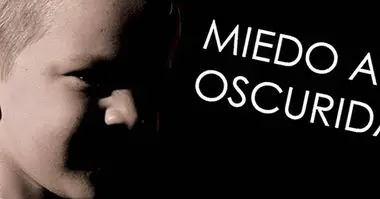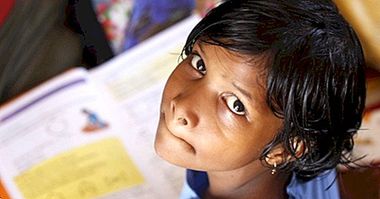Differences between punishment and limit (in the education of children)
Something basic to facilitate coexistence is to try to maintain our behavior around parameters that we call social norms. If on some occasions adults perceive these parameters as arbitrary and illogical; it is even more common for children to have difficulties in assimilating them and acting in accordance with them.
During the process (the recognition and respect of standards), adults are key characters, because in large part through us is how they learn what they are expected to do and what they do not. Specifically, our influence has to do with the way we teach what the limits are and what happens if they are not respected.
In this article we will see some differences between limits and punishments , as well as one of the proposals of modern pedagogy to maintain a respectful educational style that at the same time transmits to the boy or girl some necessary guidelines to coexist.
- "The 6 stages of childhood (physical and psychological development)"
Authority or negotiation?
Since educational models began to be "child-centered", early childhood education has moved from a model of authority (where adults were the ones who gave the orders and the children simply followed them); to a model that is more based on negotiation, where one must take into account the child's own need and not just that of the adult.
In this sense, when using concepts such as norms, discipline, limits and authority in early childhood education, we do not generally speak of an authoritarian model that suggests domination, but of a model that seeks coexistence, respect, tolerance and responsibility over children. own acts.
However, The model based on negotiation has generated some difficulties , not only for children but for caregivers and educators, since sometimes it becomes a fully permissive and overprotective parenting style.
What does "set limits" mean?
Setting limits is necessary because this way we teach children that they can not do absolutely everything they want without considering how that affects other people.
This even helps develop other skills, such as recognizing one's limits and how others should approach or not ; It can also help children to recognize and establish clear limits on long-term self-demand.
In practical terms, a limit is to specify when, how and where a behavior is not allowed; and when, how and where it is allowed.
For example, when young children are in the process of understanding risk behaviors, it is common for them to approach dangerous spaces and do things like stick their fingers in the plugs, put their hand on the stove or the stove, run to where there are cars , etc.
In addition to taking the necessary and classic measures such as covering the plugs, it is also useful to indicate to them in firm phrases, short words and simple words, that "here not". It is also important to put clear limits on the approach of others, especially to distinguish their personal space and which the space of others.
Finally, setting limits is not the same as delimiting or even imposing rules, which do not necessarily facilitate coexistence but that do correspond to the values of each context. For example, getting good grades or not sleeping after 10:00 pm is a norm that varies according to the dynamics that exist in different spaces.
Differences between limit and punishment
After setting a limit, what follows is the child's response. Generally the children do not respect the limit the first indication, although it can happen that they do not either the second or the third, before which, follows a response from the adult.
Then we will know the differences between limits and punishments .
1. The limit is only the indication, the punishment is the answer
The limit is only the indication, the punishment is the response to the child's behavior . The limit then is the specification of what is not allowed and the punishment is the response of the adult, once the child has not respected that specification. The punishment is usually loaded with emotions such as anger, so it is more an adult response for relief, which has little effect, or even can have negative effects, on the education and discipline of the child.
2. The limit anticipates a consequence, the punishment does not
The limit anticipates the consequence, the punishment is the consequence not anticipated . Being a specification, the limit makes the child recognize certain rules, which can respect, or not. Punishment is the adult response that is not anticipated (it is given arbitrarily by the adult).
3. The punishment has no consistency with the behavior or the limit
The main characteristic of the punishment is that it has no relation or logic with the child's behavior and not with the limit that has been set . For example, when you are denied television viewing time due to inappropriate behavior you have had at school.
How to establish logical consequences instead of punishments?
The concept of "consequence" applied in education has many of its antecedents in the philosophy of Maria Montessori, Italian physician and pedagogue who laid the foundations for the development of a whole psychopedagogical method that is currently very popular.
Based on her studies, Montessori realized that children are capable of disciplining themselves and regulating themselves; But this is a process that is largely achieved through the accompaniment and guidelines generated by adults.
A) Yes, comes to the conclusion that we must convey to children that behaviors have natural and logical consequences . For example, if they walk without paying attention to nearby objects, they can be hit (natural consequence).
Or for example, if one child hits another, that other will not only cry or get angry, but it is important that the child offers an apology (logical consequence). For this type of consequences, adult intervention is necessary.
Then, a consequence, besides being what happens as a response to any behavior, is also a guideline that allows us to recognize or anticipate what can happen when crossing or ignoring a limit.
By allowing the consequence to be anticipated, what we favor is the self-regulation of the child; and that the adult no longer depends on anger to facilitate it, because the child relates his behavior to the consequence, which will allow him to avoid it later.
Also, it is important that the child not only learn how not to behave, but as yes; that is, give him an alternative tool to satisfy his need (for example, asking for things or expressing his anger, instead of hitting).
Characteristics of a logical consequence:
Consequences and limits are not cooking recipes that can be applied equally to all children, vary according to the needs and characteristics of both the context and the caregivers or educators, as well as the child's own development.
In line with the above, we are going to list some important things about how it is a logical consequence, which can be useful depending on the case:
- Immediate : Occurs at the time of the behavior, not two weeks or months later, when the child no longer remembers what he did or has become accustomed to that behavior is allowed; because in addition, if a lot of time passes, it is more difficult to understand what the alternative is.
- Safe : Fulfill what we anticipate (for example, do not anticipate that there will be no break time if we know that we will give you recess time in the end). We must be sure and confident that it is within our possibilities to facilitate a logical consequence.
- Coherent : The logical consequences are related to the behavior of the child (for example in a classroom: "if you are playing at the time of studying, then you will have to work at the time that we allocate to play" instead of "if you are playing at the time of work , you withdraw from the class "). As for the behaviors that occur in the school, it is important that they have a consequence right there; Do not apply them at home if they have nothing to do with it.



















